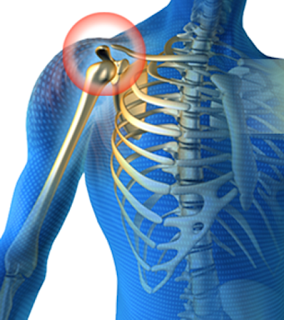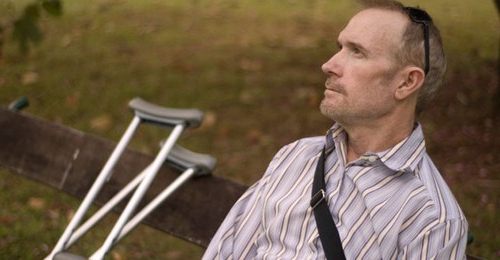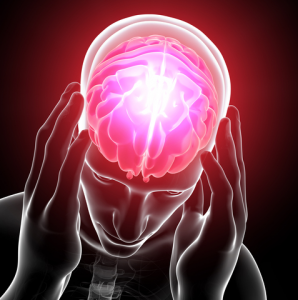In criminal law, a violation of the physiological function and anatomical integrity of human tissues and organs is recognized as harm to health. It can occur under the influence of psychological, biological, chemical or physical factors. An exhaustive list of signs by which damage to health is established is given in the Criminal Code of the Russian Federation, Art. 115, 112, and 111. There are no other federal laws setting forth and explaining these concepts. 
Important point
You need to know that the criminal legal signs of establishing health damage are used by the bodies of inquiry, court or investigation solely for the purpose of qualifying the crime of the person who caused it. The criteria are irrelevant in the resolution of the dispute on compensation for the specified damage and in establishing the degree and group of disability.
Classification
The Criminal Code establishes a distinction between health hazards. Taking into account the degree of damage may be:
- Heavy.
- Easy.
- Moderate
The medical interpretation of the criteria is carried out in accordance with the regulations approved by the Ministry of Health of the Russian Federation. The level of damage is determined in medical institutions by a specialist - a forensic expert.
Deliberate harm to moderate health
This concept is disclosed in Art. 112 of the Code. Damage to moderate health according to the provisions is characterized by the fact that it does not pose a threat to human life. In this regard, this fact does not entail consequences from Art. 111 of the Code. However, the moderate severity of the health hazard causes a prolonged physical upset or a substantial permanent disability of less than 1/3. As a result of damage, both of these consequences can occur simultaneously. 
Characteristic
Medium-severity damage is, for example, fractures and cracks in small bones, damage to 1-3 ribs on one side, persistent speech difficulties, dislocations of medium-sized joints, moderate concussion, loss of a toe or arm, and so on. This category does not belong and, accordingly, are not classified according to Art. 112 consequences of Art. 111 of the Code. These include: loss of vision, limb, tongue, hearing, productivity, speech, abortion, mental illness, fatal disfigurement of the face.
Objective side
In this composition, the objective side is formed by:
- The criminal consequence is harm to moderate health.
- An act representing a public danger (inaction or action).
- The connection between the crime and the specified consequence in the form of a violation of the state of a person of moderate severity.
Health damage is:
- Long-term disorder.
- Significant disability less than 1/3.

The first according to the Rules of forensic examination (p. 45) should be understood as the consequences directly related to the damage: temporary disability for more than three weeks. The days of hospitalization and discharge of the victim from a medical institution are recognized as full days. Significant permanent disability of less than 1/3 is recognized as its loss by 10-30%.
Subjective part
She is characterized by conscious guilt. Moreover, intent can be indirect or direct. Most often, it is not specified (not defined) in cases of damage to the physical condition of a person.
Motives and goals
The reasons why it is harmful to moderate health are very diverse. In practice, the most common cases of hooliganism. One of the most frequent circumstances causing damage to moderate health is an accident.Some goals and motives act as grounds for classifying this act as a qualified type of crime. In this category, in accordance with the Criminal Code, harm to moderate health applies if the offense is committed:
- With particular cruelty, torment or bullying, including if actions are directed at a person in a helpless state.
- For hooligan purposes.
- In relation to a citizen (or his relatives) in connection with the performance of his official duty or other activities aimed at protecting interest in the framework of the law.
- A group of persons, including an organized group or by conspiracy.
- In relation to two or more persons.
- Based on religious, racial, interethnic hostility (hatred).
- Repeatedly or by a person who previously committed a crime that caused serious harm to the state, or murder by Art. 105 of the Criminal Code.

The content of these criteria is used in the analysis of crimes defined in Art. 111, parts 2, 3, and also Art. 105, part 2. It should be noted that for qualification under Art. 112, part 2, paragraph "d", it is enough to cause harm to moderate health, not only during the commission of hooliganism subject to criminal punishment. Repeated crime should be understood as an offense recorded at least two times. On the subjective side of the composition, it is necessary to separate the attempted murder and the infliction of grievous damage from moderate harm. Of particular importance in this case is the determination of the content and orientation of the guilty motivation.
A responsibility
Physical damage of moderate severity (harm to health), not life-threatening and not involving the consequences referred to in Art. 111 of the Code, but provoking a long-term disorder or permanent significant disability by less than 1/3, shall be punished by arrest or imprisonment. In the first case, the duration of detention is from 3 to 6 months. For damage to moderate health, a person may also be sent to places of deprivation of liberty for a period of up to three years. The length of stay in isolation from society is increased to five years if the same crime is committed:
- For two or more persons.
- With particular cruelty, torment and bullying.
- Regarding the person (or his relatives) in connection with the performance of his official duty or the performance of activities aimed at protecting the public interest.
- A group of persons, including conspiracy or an organized group.
- Based on religious, racial, national hostility or hatred.
- From hooligan motives.
- Repeatedly or by a person who has previously committed intentional grievous bodily harm or murder under Art. 105.

Wording from expert opinion
In accordance with the established signs of damage, the specialist draws up motivated conclusions. Their wording in conclusion may be as follows:
- "This damage - a fracture of the humerus on the right - resulted in a prolonged violation of health (more than 21 days) and in this regard is considered the average severity of harm to health."
- "This damage caused minor residual effects due to a concussion. There are objective signs (smoothness of the nasolabial folds and others). The condition is accompanied by a permanent disability of 15-20% - less than 1/3. In this regard, it refers to moderate severity of harm health. "
Examples
1. Citizens Petrov and Ivanov molested a stranger on the street. Passed by citizen Sidorov. The girl turned to him for help. He, in turn, turned to Ivanov and Petrov with a demand to leave her alone. These citizens, in response to the demand, attacked Sidorov and began to beat him. However, police officers who managed to detain the violators came to the rescue. As a result of the beating, citizen Sidorov was treated for four weeks.In this case, there is a moderate severity of harm to health (Article 112 of the Code). 
2. Citizen N. received several punches in the body and head during a drunken brawl. In the process of beating, he fell, losing consciousness for a short period. Upon admission to a medical institution, the state of citizen Sh. Is satisfactory. A hematoma is present on the victim’s forehead, the size of which is 5.5 x 4.3 centimeters. There is a decrease in hearing on the left side, horizontal nystagmus on both sides, smoothness in the nasolabial fold on the left. During treatment, the condition of the victim improved.
Clinical diagnosis: bruising of the head, hematoma of the frontal zone on the left, concussion 1-2 tbsp., Traumatic neuritis of the auditory nerve on the left. Citizen N. was in the hospital for 18 days, then he was treated at the outpatient clinic for 25 days at the clinic. During the examination, the victim complains of high fatigue. Objectively observed vegetative lability and swaying. Expert's opinion: the indicated injuries could have been caused on the day of the fight by any solid object or may have arisen as a result of an impact on it and are classified as moderate damage to health that caused a prolonged disorder of the condition (more than 21 days). 
3. Citizen H. during the fight received a blow to the left hand with a bottle. The fragments caused a wound to the forearm. The hospital underwent primary treatment of wounds. On the fourth day after the injury, there are no active movements in the second finger, the hand is swollen. After 8 days, the stitches were removed. However, the movement in the second finger is not restored. An examination in the trauma unit revealed a tendon rupture. After a physiotherapy course, a stapling operation was performed. The surgery was successful, the postoperative period was without complications. The victim received sick leave for 29 days. During the examination after a month, a slight stiffness of the second finger on the left hand is observed. Conclusion: the injuries cited in the case could have been caused by an object with sharp edges, probably a piece of glass, and are classified as moderately harmful health, which caused a prolonged violation of the condition (more than 21 days).
